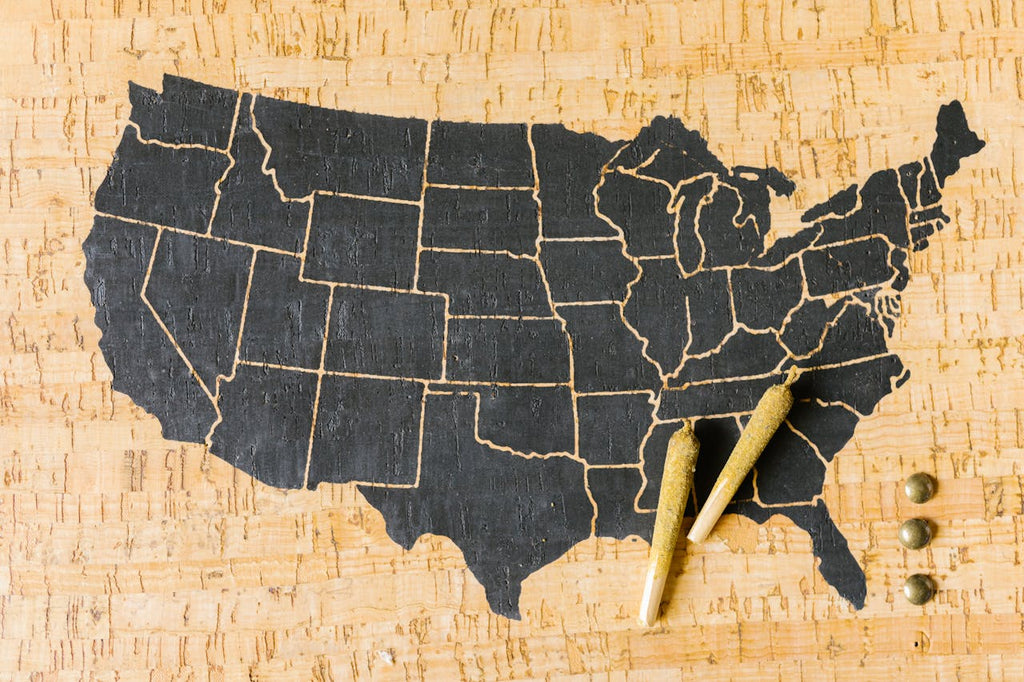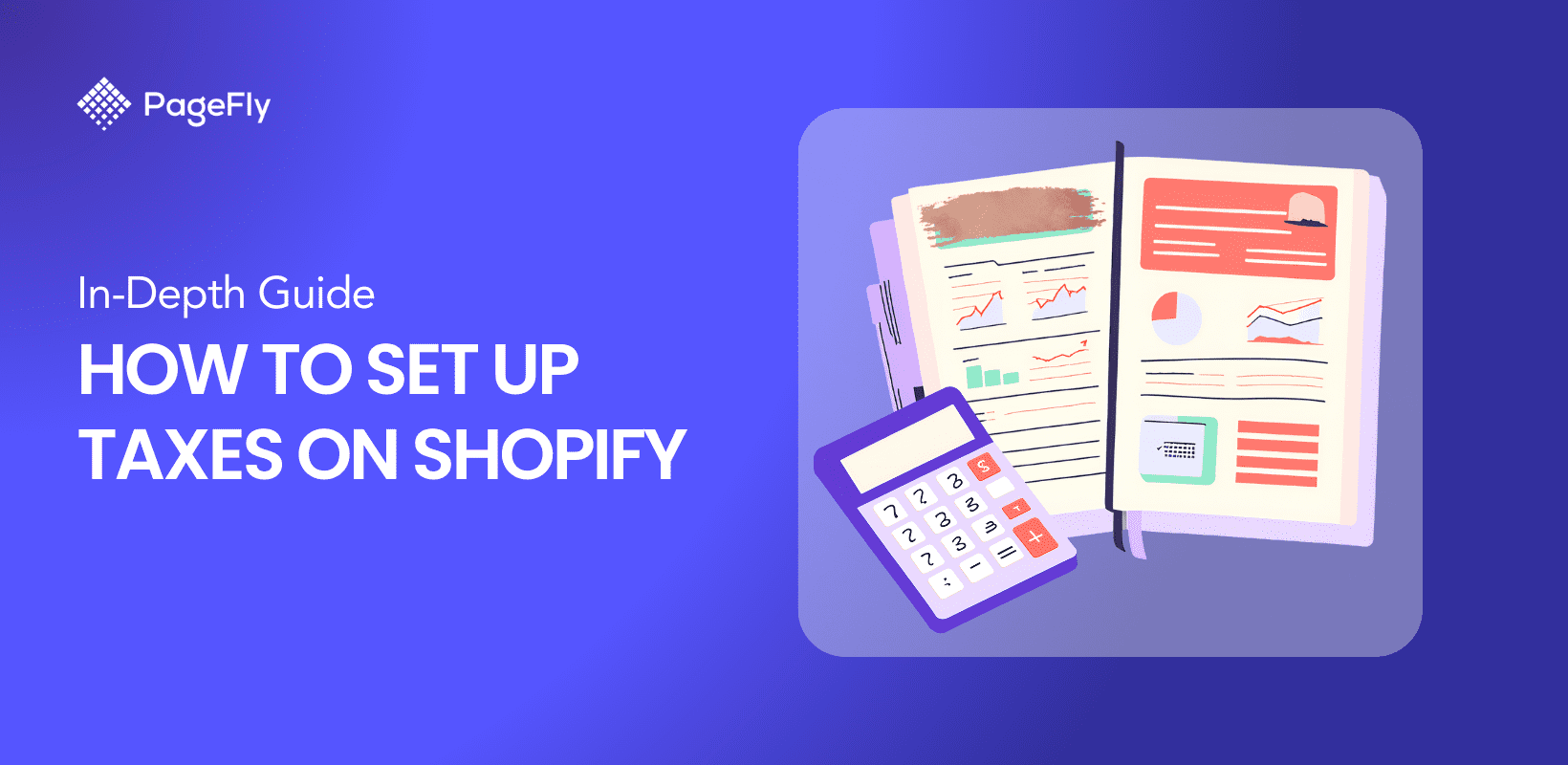We will demystify how to set up taxes on Shopify in this article. So focus and take notes if needed.
Setting up taxes on Shopify can be a complex task for new merchants, especially when navigating the intricacies of the U.S. taxation system. The United States has a multifaceted tax landscape, with varying local, state, and federal taxes that must be accurately calculated and collected – making it difficult to identify whether or not one should collect sales tax.
In this guide, we aim to highlight this confusing subject so Shopify merchants like you can set it up and get back to your business.
From understanding nexus requirements to managing tax rates across different jurisdictions, we’ll help you ensure your Shopify store is tax-compliant, allowing you to focus on confidently growing your business.
Disclaimers:
- This guide is for US-based merchants – those who are physically based in the US and are selling within the country and outside the country
- The content of this article is not to be construed as tax advice but only as a guide to setting up Shopify taxes. For more accurate information about specific tax laws within your state, consulting a tax expert or tax accountant is your best recourse.
Do I Need To Set Up Taxes On Shopify?

Source: Pexels
Before we start this discussion, you should know that Shopify will not file sales tax for you. In order to legally charge sales tax from your customers, you need to register your business with your local or federal tax authority. Remember that remitting sales tax is the responsibility of each Shopify merchant.
Going back to the question, “Do I need to set up taxes on Shopify?”
The short answer is YES as it’s the ethical and legal thing to do. While Shopify does not pay your taxes for you, the platform is legally obliged in the US to submit annual reports of its merchants.
This means that if you are not paying your taxes and the IRS takes notice, you might be faced with local and federal tax sanctions
Be that as it may, there are some exemptions to US sales tax. These exemptions can cover manufacturers, wholesalers, and retailers.
But unless you possess a valid certificate of exemption, you should default to collecting sales taxes. To know if your online store is exempted from charging sales taxes, talk to a tax professional.
Here’s a good read to learn more about US Sales Tax: U.S. sales taxes: how it works and where sales tax applies | Raymond Chabot Grant Thornton
Sales Tax Nexus: Overview Of US Taxes on Shopify
Sales taxes in the United States are not taxes imposed upon sellers. Rather, as a consumption tax, sales tax is imposed upon the final user of a product. The sellers merely act as the state’s agent to collect these taxes from the consumers and pay the same to the governing state.
As US states may have differences in taxation laws, the best way to identify whether or not you should charge sales taxes from your customers is by understanding the concept of Sales Tax Nexus.
The sales tax Nexus consists of two concepts:
- Physical Nexus
- Economic Nexus
Here's a breakdown of each concept:
Physical Nexus

Source: Score.org
Physical Nexus refers to a Shopify store’s physical presence in a state. This will give rise to an obligation to comply with that state’s tax laws.
A physical presence can include:
- Having an office or a place of business such as a retail store or a warehouse within the state.
- Having employees who are working in the state.
- Owning or leasing a property (that’s also used for business operations) inside a specific state.
- Having sales agents who are conducting business operations within the state.
- Using company vehicles to deliver products within the vicinity of the state.
Thus, knowing whether or not you are bound to pay internet sales tax to a particular state via the concept of Physical Nexus is quite simple. You have to have one of the five things listed above.
Economic Nexus

Source: Pexels
Economic Nexus, on the other hand, refers to a business’s activity in a state where it has a substantial impact on the state’s economy. This means that physical presence is not required. Instead, whether or not a business should charge sales tax to its customers in various states depends on the business’s sales in that particular state.
There are two bases for determining economic nexus:
- Sales revenue - exceeding a certain amount of sales revenues in a state within a specified period, typically $100,000 in revenues within a tax year.
- Volume of transaction - achieving a specified number of transactions within the state, usually 200 or more transactions.
Thus, you are bound to pay sales taxes to a state when you exceed 200 transactions even if you haven’t reached the $100,000 revenue threshold. At the same time, you are bound to pay sales taxes when you exceed the $100,000 revenue threshold even if you haven’t reached the 200-transaction ceiling.
However, you may not be bound to pay sales tax on your inter-state shipping unless you meet the economic nexus threshold of that specific state (unless you have a physical nexus).
For factual information, refer to this Economic Nexus State by State Chart.
Practical Example For Sales Tax Nexus
Say you have an online store and you are operating out of New York, since your office is located in the said state, you have a physical nexus and you should pay sales tax. If you have a physical store in New Jersey or other states, you also have a physical nexus in those states.
Despite being primarily located in New York, if you generate more than $100,000 in revenues or more than 200 transactions from Illinois ($100,000 or 200 transactions is the economic nexus threshold in Illinois), you have economic nexus and you should pay sales taxes.
Understanding these concepts will help you avoid penalties. As such, it is crucial to stay informed about the specific thresholds in states where you have a sizable customer base.
How To Set Up Taxes On Shopify
Before you can charge sales tax from Shopify, you should know the taxation method that applies to your online store depending on where you are located.
If your Shopify store is registered in the US, you need to follow a registration-based taxation.
Registration-based taxation on Shopify requires US-based merchants to register for sales tax permits in states where they have a tax obligation.
After registering for a sales tax permit, you can start imposing sales taxes on all your qualified sales. In Shopify, there are two ways to do that:
- Automated sales tax using Shopify Tax
- Semi-automated sales tax using Basic Tax
- Manual sales tax using Manual Tax
In this section, we’ll talk about these methods and we will give you a step-by-step guide on how to apply them to your online store.

Shopify Tax
Shopify Tax is the platform’s proprietary tool that offers the highest level of tax compliance for online stores. This is done by imposing a sales tax on your product based on its category.
It is to be noted that when adding new products on Shopify, categories are automatically suggested. However, you can still choose which category that product will belong to.
Even though Shopify Tax can be reliable, it has its limitations in such a way that it cannot calculate sales tax on the following items:
- Orders that are destined outside the United States.
- Orders acquired outside Shopify via third-party apps such as Facebook, Amazon, etc.
- Orders that contain one or more products with an associated tax override.
Tax overrides on Shopify are used if you want to gain greater control when you charge sales tax or when your products are legally exempted.
Overriding Shopify tax is fairly easy.
- Go to your admin and select the Products menu
- In the list of products, select the one that you need to apply tax override
- In the Pricing section of the product listing, uncheck the Charge tax on this product.

When you uncheck this, Shopify Tax will no longer automatically charge sales tax on the product.
Note: Shopify Tax is not free. The platform charges certain fees when the sales threshold is exceeded. Refer to this manual for more information.
How to set up Shopify Tax
To set up Shopify tax:
- Open your Shopify admin and go to Settings
- Select Taxes and duties
- In the Tax regions, find and click the United States

- In the Tax service section, click Manage and activate Shopify Tax.

The good thing about Shopify Tax is that it has some powerful automated features that will require minimal upkeep from Shopify merchants. As such, when the economic nexus is reached, your online store will start charging sales tax.

- Collect tax in regions where you’re liable - This function automatically tracks your sales in various US regions and it gives insights when your action is needed.
- Categorize products for more accurate tax - Here, you can categorize each product so you can charge the right tax according to existing laws.
- Access the data you need to file in each jurisdiction - Lets you access more detailed data regarding the sales tax that you need to file in each state or jurisdiction.
Basic Tax
Basic Tax is a semi-automated sales tax collection tool that sits in between Shopify Tax and Manual Tax. This one is best for Shopify merchants who want some level of automation in their tax collection but do not want to pay the fees of Shopify Tax.
Since it’s semi-automated, it would still need upkeep from the user to reduce the risk of under or over-collection.
How to set up Basic Tax
To set up Basic tax:
- Open your Shopify admin and go to Settings
- Select Taxes and duties
- In the Tax regions, find and click the United States

- In the Tax service section, click Manage and activate Basic Tax.

Now that you have Basic Tax activated, you can manually select the US states where you can legally collect sales taxes, as well as manually add shipping and product overrides.

Manual Tax
If you want full control over your sales tax without platform intervention, you can manually control sales tax collection on your Shopify store using Manual Tax.
As mentioned, before you set up your Shopify store to manually or automatically charge sales tax from your customers, you must be legally registered to do so and you might have to register in tax agencies within the state where you have economic and/or physical nexus.
How to set up Manual Tax
To set up manual taxes:
- Open your Shopify admin and go to Settings
- Select Taxes and duties
- In the Tax regions, find and click the United States

- In the Tax service section, click Manage and activate Manual Tax.

After activating Manual Tax, you can then manually input the federal tax rate for your specific industry as well as the sales tax for each US state.


Use Shopify Sales Tax Apps To Reduce Your Headache
For Shopify stores with more complex operations such as:
- Selling in wholesale and retail
- Selling inside and outside the United States
- Located outside the United States but mainly sells within the US
They might need a more advanced tool to collect sales tax for them. For that, the Shopify app store has some powerful tax solutions for them.
Below, we’ve listed down three tax tools that can be highly useful if you need more advanced taxation features.
Remember: Always consult a tax professional to make sure that you are legally compliant with the tax laws of your jurisdiction even if you’re already using a tax app.
Sidr - Sales Tax Automation

Source: Shopify App Store
Rating: 5 out of 5 (30+ reviews)
Pricing: Starts at $19 per month. Free trial available.
Sidr is a sales tax automation tool that offers merchants a convenient tool for collecting and filing sales tax by automatically filing them to the corresponding state websites.
It has an Economic Nexus dashboard that allows you to be updated for when you need to start collecting taxes. Starting at just $19 per month, new Shopify stores who want to be tax-compliant at an early stage will find this tool very useful in their day-to-day operations.
Key features:
- Automatically files sales taxes to concerned US states
- Lets you stay updated on your Economic Nexus
- Provides accurate and up-to-date tax reports
- Automatically obtains sales tax permits when needed
Quaderno - Taxes Automation

Source: Shopify App Store
Rating: 5 out of 5 (5 reviews)
Pricing: Starts at $49 per month. Free trial available.
Quaderno is a tax management tool for growing online stores that transact inside and outside the United States. Just like Sidr, it automatically notifies you when you’re about to reach the Economic Nexus in any US state.
In addition to automated US sales tax calculation, Quaderno can also automate tax calculation for countries outside the United States so you remain tax-compliant wherever you transact.
Key features:
- Tracks Economic Nexus on US states so you can charge sales taxes when needed
- Enables merchants to send tax-compliant invoices globally
- Multi-language and multi-currency invoices
- Notifies merchants when tax policies or tax rates change
Bookkeep: Sales Tax + Acctg Sync

Source: Shopify App Store
Rating: 5 out of 5 (40+ reviews)
Pricing: Starts at $60 per month. Free trial available.
Bookkeep is a powerful accounting and tax management tool for Shopify merchants who also have physical stores and are using Shopify POS for their in-person transactions.
What makes this Shopify app exceptionally good is that it can be integrated with accounting systems such as Xero, Quickbooks, and Zoho so you can do your accounting and tax management all in one place.
Key features:
- Compatible with accounting management tools such as Xero, Quickbooks, and Zoho
- Tracks sales from Paypal and other marketplaces such as Amazon
- Automates sales tax collection across all jurisdictions
- Allows management of multiple locations and sales channels
Conclusion
Compliance with state and federal tax regulations is crucial for the success and legality of your Shopify store. That’s why the collection of Shopify sales tax is mandatory if you are operating an online store in the United States.
As soon as you open up a shop, you should be prepared to begin collecting sales tax in the area where you have a physical nexus. As your brand grows and acquires more customers from all over the United States, you should be able to track your revenues for when you need to collect and remit sales tax in states where you reach the economic nexus threshold.
As tax obligations can vary from state to state, it is important to use tax automation tools such as Shopify Tax or any of the apps that we mentioned above.
For some, taxes are an annoyance and burdensome, but if you know how to properly set up taxes on Shopify, you’ll be able to prevent under and over-collection.
And if you look at the bright side, paying more taxes is a good sign that your business is growing. So kudos to you!
Read more: How to Add Product on Shopify - A Quick Guide for Beginners
How To Set Up Taxes On Shopify FAQ
Shopify Tax is the platform’s proprietary tool that offers the highest level of tax compliance for online stores. This is done by imposing a sales tax on your product based on its category.
To set up Shopify tax:
- Open your Shopify admin and go to Settings
- Select Taxes and duties
- In the Tax regions, find and click the United States
- In the Tax service section, click Manage and activate Shopify Tax.
The good thing about Shopify Tax is that it has some powerful automated features that will require minimal upkeep from Shopify merchants. As such, when the economic nexus is reached, your online store will start charging sales tax.
Before you add taxes on Shopify, first, you need to make sure that your business is legally allowed to collect sales taxes from your customers. If you are located in the United States, you should follow a Registration-based taxation where the rules of Sales Tax Nexus apply.
After knowing these things, you can add taxes on Shopify by following these steps:
- Open your Shopify admin and go to Settings
- Select Taxes and duties
- In the Tax regions, find and click the United States
- In the Tax service section, click Manage and activate Shopify Tax, Basic Tax, or Manual Tax.
Which one you should choose depends on several factors such as your business model, niche, location, and business size, among other factors.
To make sure that you are using the best sales tax method for you, consult a tax professional.












![27 Best Shopify General Stores + Complete Strategy Guide [2025]](http://pagefly.io/cdn/shop/articles/Best_Shopify_General_Stores_2f9d09f2-7c38-4da9-a495-e9f4898ddd68.jpg?v=1757271936&width=1640)





